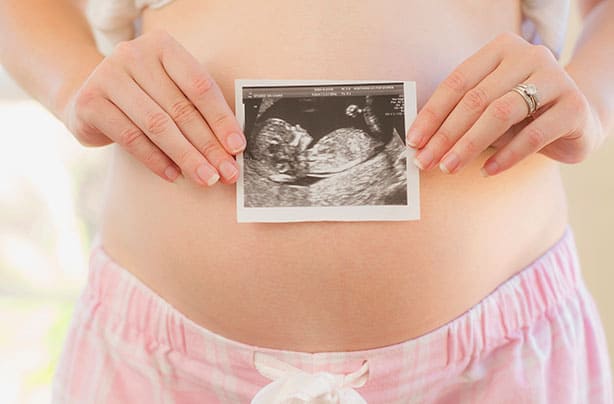
Table of Contents
Ramzi theory, Pregnancy is perhaps the most exciting and intimate phase of a marriage or a relationship for any couple. The moment parents learn about their pregnancy, the first natural thought that pops in is ‘Would it be a baby boy or a baby girl?’ While a lot of parents choose to keep this information undisclosed and take it as a surprise when it comes, some rather impatient and excited parents also choose to determine baby’s gender. It is usually celebrated at scale in the form of a ‘gender reveal’ party. For some parents, it is also very essential to learn the gender of the baby in order to prepare for the baby’s nursery, clothing, and toys.
Determining your baby’s gender is also a very emotionally substantial moment for the parents as that is when they could really start to get attached to the baby. Parents start to think about the features the girl/boy would have and perhaps what name could be given to the baby. Parents, usually, need to wait for about 20 weeks before the baby’s gender can actually be determined through a sonogram. Gynecologists can determine this information only during the second trimester of the pregnancy. But, for some parents, waiting until the second trimester could also be really an ordeal.
What is the Ramzi Theory ?
The Ramzi Method, admittedly not a perfectly accurate method, is a traditional and fun way of determining your baby’s gender – as early as at 8 weeks of conceiving! A rather fun and no-frill approach, parents lately have been considering this method because while it might not be accurate, it at least still gives some sense of information to the expecting parents and is also a fun activity, to begin with.
The Ramzi Theory was founded by Dr. Saam Ramzi Ismail, and he experimented with this theory to see if there was a correlation between a baby’s sex and how and where the placenta developed. He was able to do this by examining the laterality of placental/chorionic villi, and these are the hair-like structures, which make up the placenta.
However, peer-reviewed research has not verified the Ramzi Theory as a method of determining sex.
Nonetheless, the Ramzi Theory has become a hot topic of conversation among pregnant women. Many ladies are sharing images of their early ultrasounds to see if anybody can use the Ramzi theory to identify their baby’s gender.
How Does The Ramzi Method Really Work? Here’s how-
- Take the picture of your ultrasound from around the 8th week of pregnancy. Look at the picture in an upside-down manner; identify the entire fetus and the outline of the uterus.
- As expecting parents, you should understand that Ramzi Method is just a theory, though it has given accurate results to some parents. This theory works on the basis of the placement of the placenta.
- The developing placenta, also called the “chorionic villi,” is your main shot here. Now, the theory is, if the placenta is on the mother’s right side, the baby, most likely, would be a boy.
- And on the flip-side, if the placenta seems more inclined on the left side, the mother is perhaps carrying a baby girl!
- If, as newbie parents, you are unable to identify the placenta, you could also actually just ask the ultrasound technician if the fetus is developing on the right or the left and save yourself the confusion.
How To Use The Ramzi Method ?
If your first ultrasound is approaching and you’re eager to learn more about your baby’s gender, you may try the Ramzi Method for yourself by following these instructions.
- Get a mirror travesered ultrasound scan- A mirrored transverse ultrasound scan is the clearest direction to find the location of the placenta.
- Request a medical professional to show you the placenta- If you’re not a qualified ultrasound technician, reading a sonogram that early might be challenging. It is better that you request the medical expert doing the checkup to show you the placenta.
- Examine the results- Once you have seen the placenta, you can give the Ramzi Method a try. If the placenta is on the right side of your uterus, you are carrying a baby boy, if the placenta is on the left side of your uterus you are carrying a baby girl.
Are You Ready To Experiment With The Ramzi Method?
As mentioned earlier, there is no proven accuracy of the Ramzi theory, however, the data from researches has suggested that the method was accurate in predicting the sex of the baby up to about 97% of the time. But the emphasis remains- since this is not validated by science or by professionals in the field, you may not want to be completely reliant on this method.
The method, perhaps, can be tried by parents at the eight weeks and later be validated around the second trimester by a professional! While you are on it, and cannot hold the excitement, you can always look for gender-neutral room themes and baby names to prepare better for your bundle of joy. And in between, you could also check out our blog for other baby-prep topics that can help you pick out the best of diaper bags, best of baby bassinets, and even the best of burp cloth for your baby amongst many otherwise hard-to-make decisions.
Decisions, commitments, and unconditional love for the baby you have not even seen yet – is that not Parenthood Bliss anyway?
Final Conclusion:
Many parents would like to know the gender of the baby for multiple reasons, such as if you would like to head start the decorations of the nursery or perhaps, register for a baby shower.
However, the Ramzi method, as they say, is used to determine the sex of the baby but hasn’t been confirmed by peer-reviewed researches or even by other scientists and doctors.
Nonetheless, the method is quite popular amongst pregnant women who are also seen as posting screenshots from their early ultrasounds. They do so for anyone to see and notify them about their baby’s sex by using the Ramzi theory. So, have you thought of it yet?
Till you still have time in hand and are thinking of it all, you could in the meantime look at certain other ways to determine the sex of your baby, in a rather more traditional way. These methods include:
- The chromosomes – This is the most accurate way of determining the sex of the baby and it has been traditionally done through invasive tests. Tests like chorionic villi sampling that is performed in between the 11th and the 14th week, and the other test is amniocentesis, which is performed in about the 16th week.
- Maternal blood test – This new noninvasive method helps determine the baby’s sex as early as by the 9th week. It is cost-effective and doesn’t risk babies or maternal health.
These tests are performed to provide information on whether the baby’s risks chromosomal disorders like Down syndrome. And, these are not used just as simply a sex determination test, until and unless there’s a concern for sex-linked disorders.
Ramzi Theory FAQs:
1. What is the Ramzi theory of a baby in pregnancy ?
2. How do we know if it’s a boy according to the Ramzi theory ?
3. Is the Ramzi theory baby method correct ?
4. Who is the founder of the Ramzi Theory ?
5. During which weeks of pregnancy is the chorionic villi sampling performed ?
Reviewed By:

Esha Chainani - Obstetrician and Gynaecologist
Dr. Esha Chainani is an Obstetrician, Gynaecologist, and laparoscopic surgeon who aims to break the stigma around women’s health by advocating an inclusive and open practice of obstetrics and gynecology and an author of several internationally published research papers and health articles in the media like the Swaddle.
She also founded Premaa, a non-profit to reduce maternal morbidity and eventual maternal mortality by providing lower-income pregnant women living in urban areas with cell phone access through an app that can feature an entire section about contraception as well for a whole gamut of reproductive health.
A panel for multiple health sessions including with the UN, USAID, BMC, gender at work, and multiple non-profit organisations, and is on the advisory panel of the South Indian medical students association.





